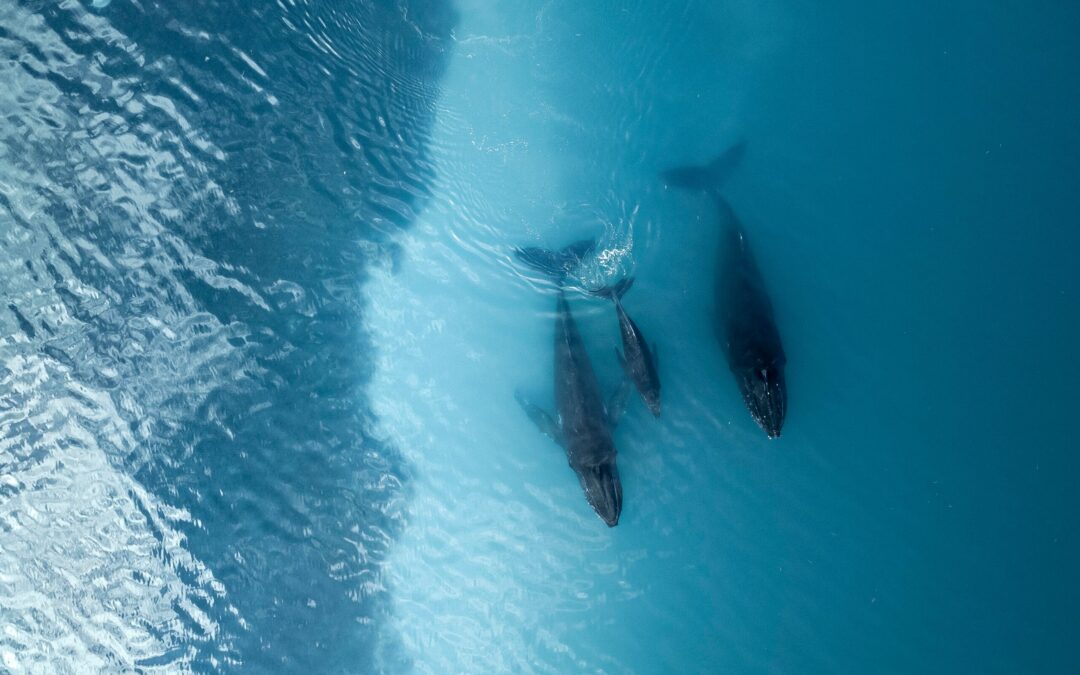Humpback Whales Communicate With Us Using “Smoke” Rings
by Cristina Ortiz, EarthSky
Did you know that humpback whales can produce spectacular rings underwater? In August 2024, scientists discovered humpback whales use this strategy to capture their prey – small crustaceans and fish – and feed. And on June 5, 2025, a group of scientists from the SETI Institute and the University of California at Davis said humpback whales also create rings to get our attention. But what are they trying to tell us? The researchers published their study in the peer-reviewed journal Marine Mammal Science on May 15, 2025. Firstly, humpback whales use bubble rings to feed. But they don’t create a simple ring.
Insects Are Dying: Here Are 25 Easy And Effective Ways You Can Help Protect Them
by Tess McClure and Patrick Greenfield, The Guardian
Insects are in trouble. Around the world, scientists are reporting catastrophic declines in their numbers, even in nature reserves that are largely protected from human touch. We are also beginning to see huge drops in the populations of other animals – such as birds – that depend on insects as food. Many of the drivers of those declines are structural, and require strong action by governments to turn around. But there are clear, easy steps that anyone can take to support the insect world. For species under such pressure, any respite is important, and we can create refuges for insects in a world increasingly hostile to their survival.
California’s Yurok Tribe Gets Back Ancestral Lands That Were Taken Over 120 Years Ago
by Dorany Pineda, Terry Chea And Godofredo Vasquez, AP
As a youngster, Barry McCovey Jr. would sneak through metal gates and hide from security guards just to catch a steelhead trout in Blue Creek amid northwestern California redwoods. Since time immemorial, his ancestors from the Yurok Tribe had fished, hunted and gathered in this watershed flanked by coastal forests. But for more than 100 years, these lands were owned and managed by timber companies, severing the tribe’s access to its homelands. When McCovey started working as a fisheries technician, the company would let him go there to do his job. “Snorkeling Blue Creek … I felt the significance of that place to myself and to our people, and I knew then that we had to do whatever we could to try and get that back,” McCovey said.
‘It Really Is Possible To Be Zero Waste’: The Restaurant With No Bin
by Imogen Lepere, The Guardian
Hunched over the pass in the open restaurant kitchen, a team of chefs are dusting ceviche with a powder made from lime skins that would, in most cases, have been thrown away. The Mexico City restaurant where they work looks like most restaurant kitchens but it lacks one key element: there is no bin. Baldío was co-founded by brothers Lucio and Pablo Usobiaga and chef Doug McMaster, best known for his groundbreaking zero-waste spot Silo London. “In my eyes, bins are coffins for things that have been badly designed,” says McMaster. “If there was a trophy for negligence, it would be bin-shaped.”
Institute for Local Self-Reliance Launches Composting for Community Mini-Grant Program in New England and New York City
by Clarissa Libertelli, Jordan Ashby, Institute for Local Self-Reliance
The Institute for Local Self-Reliance (ILSR) is launching year two of the Composting for Community Mini-Grant Program to support new or existing local community composters in New England coastal states and – for the first time – New York City. The Mini-Grant Program focuses in particular on historically underserved communities, including Native Nations and neighborhoods affected by discrimination and exclusion. We invite applications from projects originating in these communities, including BIPOC-led or BIPOC-serving organizations.


Recent Comments